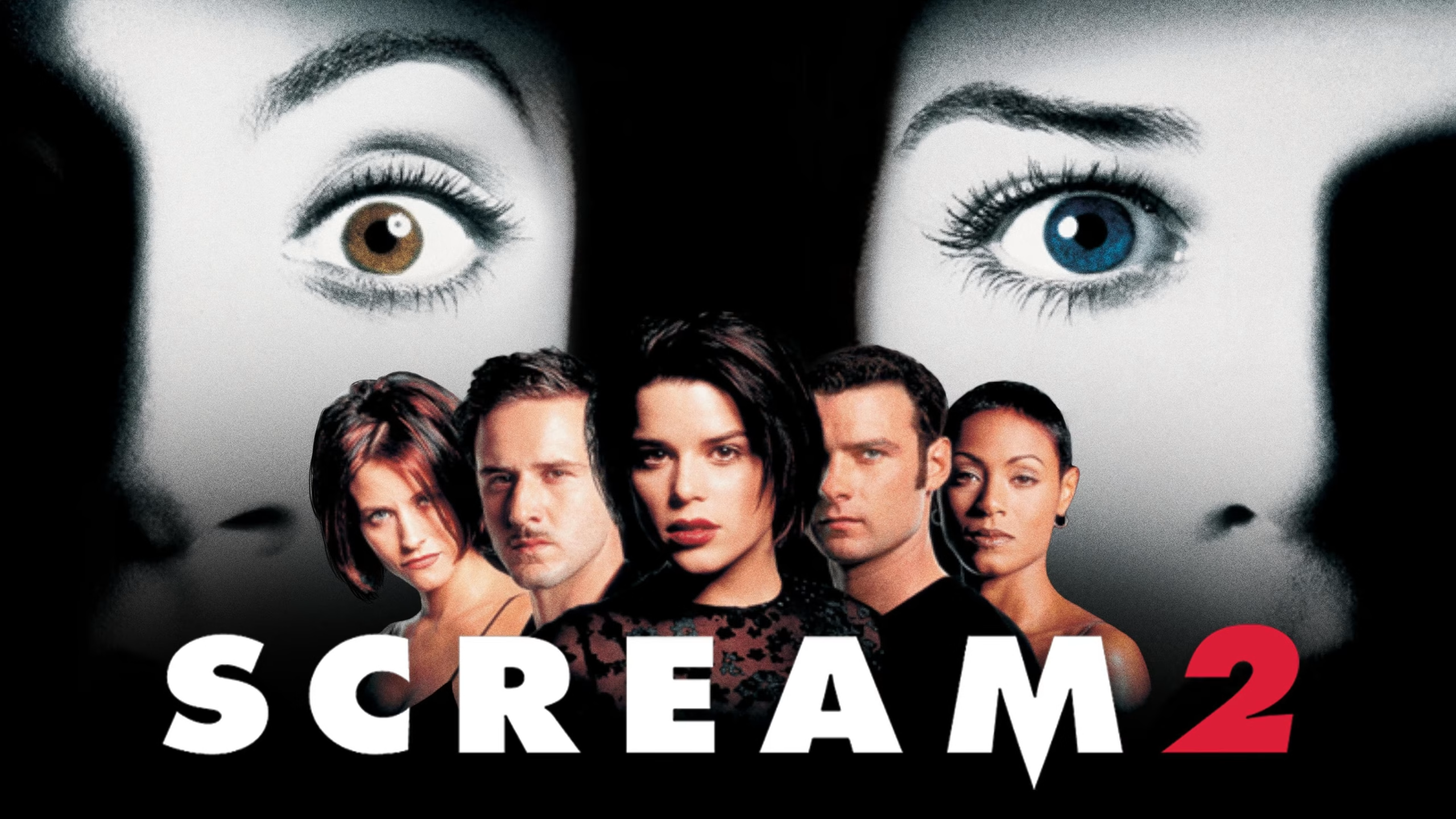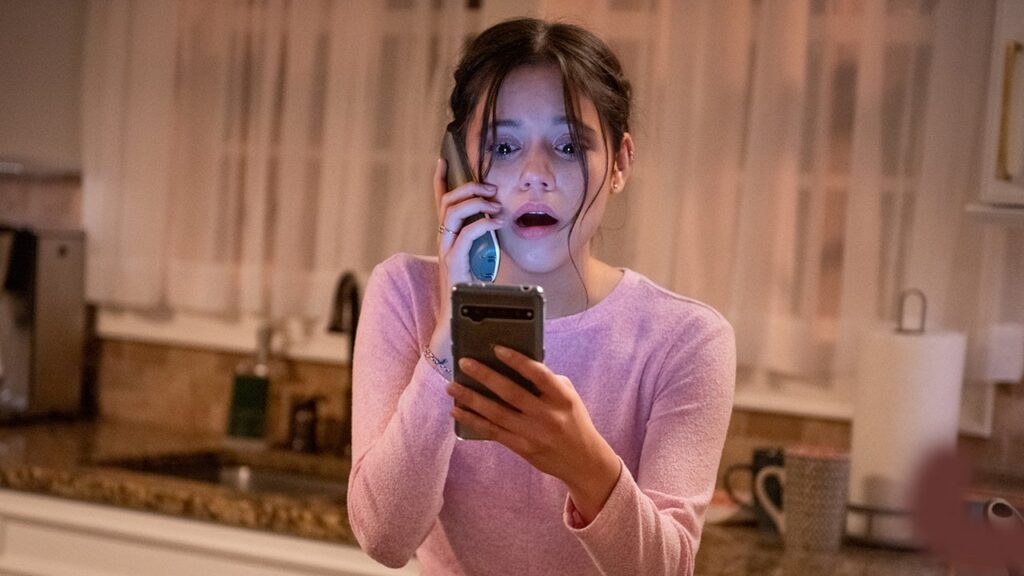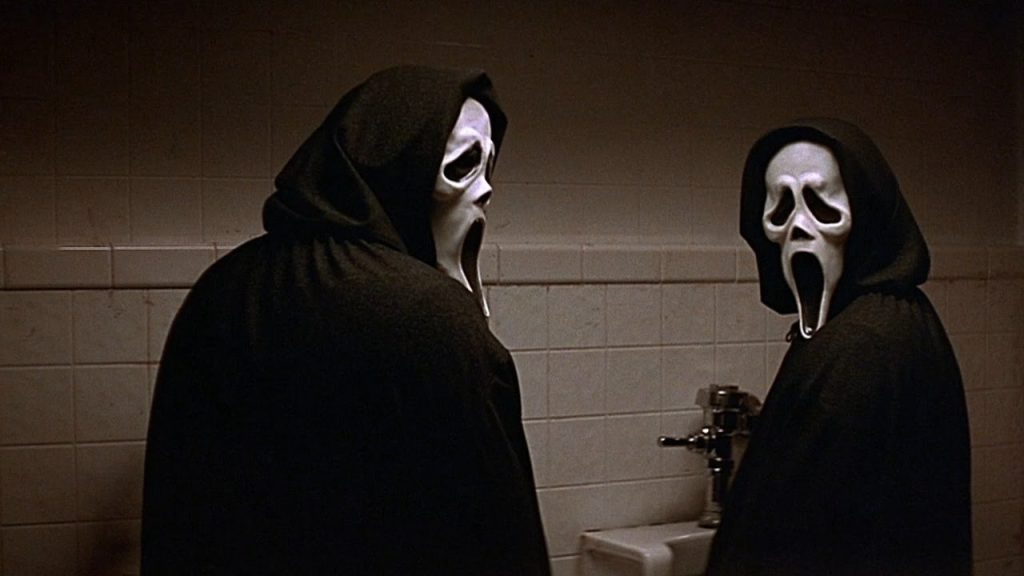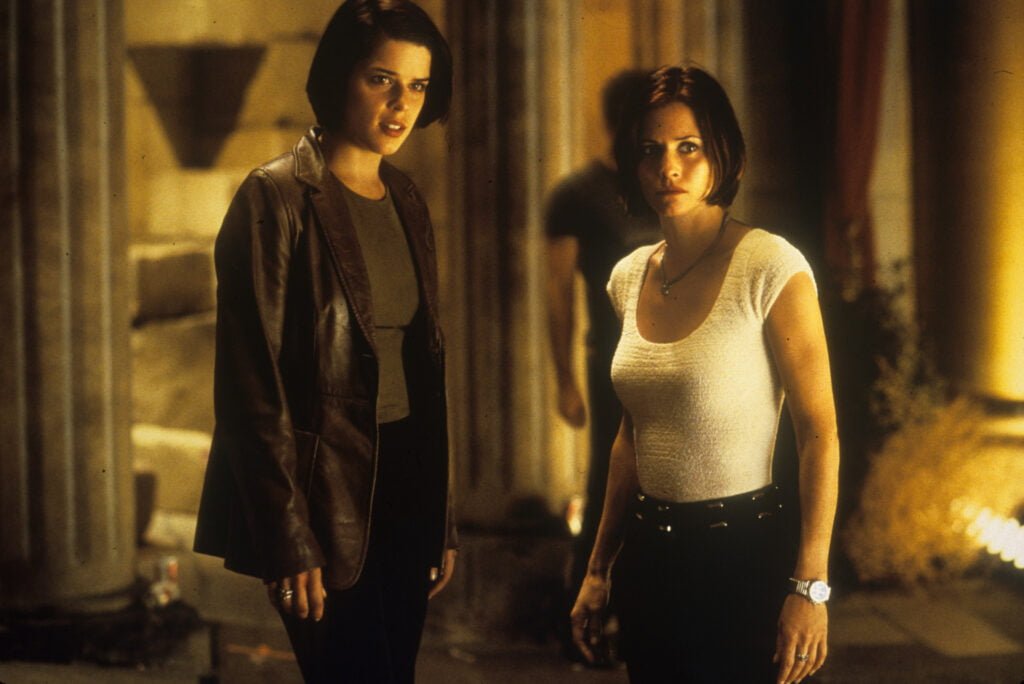Editorials
Monstrous Mothers: Unveiling the Horror in ‘Mommie Dearest’ and ‘Umma’
The horror umbrella is massive and encompasses many subgenres including thrillers, sci-fi, and even true crime. I like to quip that movies like Mommie Dearest and Priscilla belong to the latter category. I even point out they have final girls surviving their monsters, but like most jokes, there is a lot of hard truth behind that. To be clear, Mommie Dearest is highly contested even by Christina Crawford, who wrote the book about the abuse suffered at the hands of her alcoholic guardian. However, the fact remains that there is an abusive mother terrorizing children at the heart of the horror. This is a tale as old as time in the genre, and we see these themes of motherhood, mental illness, and generational trauma often. So, why do we typically forget this movie when discussing titles like Psycho (1960), Run, Hereditary, etc.?

I challenged myself to fill a gap in my cinema history this month and watched Mommie Dearest. I was very familiar with the movie due to how many drag queens reference it and because of Joan Crawford’s villainous reputation. However, I had never seen it in its entirety before, which is weird because I write about my own maternal baggage often. Without ever seeing the film, I knew this movie, categorized as a drama, belonged under my favorite genre label. Some sources even try to meet in the middle and classify it as a psychological drama, which is a phrase that does a lot of heavy lifting to remove itself from what it actually is. After all, what else should we call a film about being abused by the person who should love us most other than horror?
Does Mommie Dearest Belong in the Horror Genre?
The horror umbrella is massive and encompasses many subgenres including thrillers, sci-fi, and even true crime. I like to quip that movies like Mommie Dearest and Priscilla belong to the latter category. I even point out they have final girls surviving their monsters, but like most jokes, there is a lot of hard truth behind that. To be clear, Mommie Dearest is highly contested even by Christina Crawford, who wrote the book about the abuse suffered at the hands of her alcoholic guardian. However, the fact remains that there is an abusive mother terrorizing children at the heart of the horror. This is a tale as old as time in the genre, and we see these themes of motherhood, mental illness, and generational trauma often. So, why do we typically forget this movie when discussing titles like Psycho (1960), Run, Hereditary, etc.?
Mommie Dearest recounts a version of Christina Crawford’s upbringing by Hollywood royalty Joan Crawford. It depicts her as an unstable, jealous, manipulative woman who only holds space for her beliefs. As with most abusive parents, she takes out her frustrations and feelings of inadequacy on those around her. Specifically, those who cannot fight back due to the power dynamics at play. This version of Joan is a vicious bully, which feels familiar for many people who grew up with an abusive parent. How many of us never knew what would set our parental monster off, so just learned to walk on eggshells? How many of us grew up believing we were the problem for way longer than we should have? How many of us normalized the abuse for so long that it carried over into adulthood, letting us believe being mistreated is just part of living?
Watch the trailer for Mommie Dearest
The Lasting Impact of Abusive Parents in Horror Movies
While my mother wasn’t the active bully in our home, part of my struggle with her is her complicitness in the hell she helped create for all of us. Which is why, while I don’t think Mommie Dearest is a great film, I believe it’s a decent horror flick. It made me want to revisit a better movie, Umma, that also dealt with motherhood, mental illness, and trauma. Iris K. Shim’s 2022 PG-13 horror sees Sandra Oh playing a single mother who has not healed. After growing up with her own mother, who was especially cruel to her, she has built her world around that trauma and forced her daughter to live within its walls with her. As someone who was severely homeschooled by a woman who still really needs to find a therapist, Umma hits me in my feelings every time.
Watch the trailer for Umma below
Maternal Monsters: A Common Thread in Psycho, Hereditary, and More
Before the film starts, Oh’s character, Amanda, has turned her back on her family and cultural heritage. She has built a life that she’s not really living as she hides in her home, afraid of electricity due to the abuse she suffered at the hands of her mom. So, when her uncle shows up with her mother’s ashes, she is triggered and haunted. All of the issues she hasn’t dealt with rush to the surface, manifesting in ways that begin turning her into her deceased mom. Amanda does eventually force herself to confront her past to avoid becoming her mother and hurting her daughter. So, while Umma is different from Mommie Dearest, it’s not hard to see they share some of the same DNA. Scary moms make the genre go round which is why movies like M.O.M. Mothers of Monsters, Serial Mom, Mother, May I?, and so many others will always pull an audience by naming the monster in the title.
I doubt I am the first person on Norma Bates’ internet to clock that some of horror’s most notorious villains are parents, specifically moms. I’m also sure I cannot be the first person to argue Mommie Dearest is a horror movie on many levels. After all, a large part of the rabid fanbase seems to be comprised of genre kids who grew up wondering why the film felt familiar. However, I hope I am the first to encourage you to watch these two movies if your momma trauma will allow you to hold space for a couple more monstrous mothers this month. Both have much to say about how we cope with the fallout of being harmed by the people who should keep us safe.
Editorials
‘The Woman in Black’ Remake Is Better Than The Original

As a horror fan, I tend to think about remakes a lot. Not why they are made, necessarily. That answer is pretty clear: money. But something closer to “if they have to be made, how can they be made well?” It’s rare to find a remake that is generally considered to be better than the original. However, there are plenty that have been deemed to be valuable in a different way. You can find these in basically all subgenres. Sci-fi, for instance (The Thing, The Blob). Zombies (Dawn of the Dead, Evil Dead). Even slashers (The Texas Chainsaw Massacre, My Bloody Valentine). However, when it comes to haunted house remakes, only The Woman in Black truly stands out, and it is shockingly underrated. Even more intriguingly, it is demonstrably better than the original movie.
The Original Haunted House Movie Is Almost Always Better
Now please note, I’m specifically talking about movies with haunted houses, rather than ghost movies in general. We wouldn’t want to be bringing The Ring into this conversation. That’s not fair to anyone.
Plenty of haunted house movies are minted classics, and as such, the subgenre has gotten its fair share of remakes. These are, almost unilaterally, some of the most-panned movies in a format that attracts bad reviews like honey attracts flies.
You’ve got 2005’s The Amityville Horror (a CGI-heavy slog briefly buoyed by a shirtless, possessed Ryan Reynolds). That same year’s Dark Water (one of many inert remakes of Asian horror films to come from that era). 1999’s The House on Haunted Hill (a manic, incoherent effort that millennial nostalgia has perhaps been too kind to). That same year there was The Haunting (a manic, incoherent effort that didn’t even earn nostalgia in the first place). And 2015’s Poltergeist (Remember this movie? Don’t you wish you didn’t?). And while I could accept arguments about 2001’s THIR13EN Ghosts, it’s hard to compete with a William Castle classic.
The Problem with Haunted House Remakes
Generally, I think haunted house remakes fail so often because of remakes’ compulsive obsession with updating the material. They throw in state-of-the-art special effects, the hottest stars of the era, and big set piece action sequences. Like, did House on Haunted Hill need to open with that weird roller coaster scene? Of course it didn’t.
However, when it comes to haunted house movies, bigger does not always mean better. They tend to be at their best when they are about ordinary people experiencing heightened versions of normal domestic fears. Bumps in the night, unexplained shadows, and the like. Maybe even some glowing eyes or a floating child. That’s all fine and dandy. But once you have a giant stone lion decapitating Owen Wilson, things have perhaps gone a bit off the rails.

The One Big Exception is The Woman in Black
The one undeniable exception to the haunted house remake rule is 2012’s The Woman in Black. If we want to split hairs, it’s technically the second adaptation of the Susan Hill novel of the same name. But The Haunting was technically a Shirley Jackson re-adaptation, and that still counts as a remake, so this does too.
The novel follows a young solicitor being haunted when handling a client’s estate at the secluded Eel Marsh House. The property was first adapted into a 1989 TV movie starring Adrian Rawlings, and it was ripe for a remake. In spite of having at least one majorly eerie scene, the 1989 movie is in fact too simple and small-scale. It is too invested in the humdrum realities of country life to have much time to be scary. Plus, it boasts a small screen budget and a distinctly “British television” sense of production design. Eel Marsh basically looks like any old English house, with whitewashed walls and a bland exterior.
Therefore, the “bigger is better” mentality of horror remakes took The Woman in Black to the exact level it needed.

The Woman in Black 2012 Makes Some Great Choices
2012’s The Woman in Black deserves an enormous amount of credit for carrying the remake mantle superbly well. By following a more sedate original, it reaches the exact pitch it needs in order to craft a perfect haunted house story. Most appropriately, the design of Eel Marsh House and its environs are gloriously excessive. While they don’t stretch the bounds of reality into sheer impossibility, they completely turn the original movie on its head.
Eel Marsh is now, as it should be, a decaying, rambling pile where every corner might hide deadly secrets. It’d be scary even if there wasn’t a ghost inside it, if only because it might contain copious black mold. Then you add the marshy grounds choked in horror movie fog. And then there’s the winding, muddy road that gets lost in the tide and feels downright purgatorial. Finally, you have a proper damn setting for a haunted house movie that plumbs the wicked secrets of the wealthy.
Why The Woman in Black Remake Is an Underrated Horror Gem
While 2012’s The Woman in Black is certainly underrated as a remake, I think it is even more underrated as a haunted house movie. For one thing, it is one of the best examples of the pre-Conjuring jump-scare horror movie done right. And if you’ve read my work for any amount of time, you know how positively I feel about jump scares. The Woman in Black offers a delectable combo platter of shocks designed to keep you on your toes. For example, there are plenty of patient shots that wait for you to notice the creepy thing in the background. But there are also a number of short sharp shocks that remain tremendously effective.
That is not to say that the movie is perfect. They did slightly overstep with their “bigger is better” move to cast Daniel Radcliffe in the lead role. It was a big swing making his first post-Potter role that of a single father with a four-year-old kid. It’s a bit much to have asked 2012 audiences to swallow, though it reads slightly better so many years later.
However, despite its flaws, The Woman in Black remake is demonstrably better than the original. In nearly every conceivable way. It’s pure Hammer Films confection, as opposed to a television drama without an ounce of oomph.
Editorials
Is ‘Scream 2’ Still the Worst of the Series?

There are only so many times I can get away with burying the lede with an editorial headline before someone throws a rock at me. It may or may not be justified when they do. This article is not an attempt at ragebaiting Scream fans, I promise. Neither was my Scream 3 article, which I’m still completely right about.
I do firmly believe that Scream 2 is, at the very least, the last Scream film I’d want to watch. But what was initially just me complaining about a film that I disregard as the weakest entry in its series has since developed into trying to address what it does right. You’ve heard of the expression “jack of all trades, master of none”, and to me Scream 2 really was the jack of all trades of the franchise for the longest time.
It technically has everything a Scream movie needs. Its opening is great, but it’s not the best of them by a long shot. Its killers are unexpected, but not particularly interesting, feeling flat and one-dimensional compared to the others. It has kills, but only a few of them are particularly shocking or well executed. It pokes fun at the genre but doesn’t say anything particularly bold in terms of commentary. Having everything a Scream movie needs is the bare minimum to me.
But the question is, what does Scream 2 do best exactly? Finding that answer involves highlighting what each of the other sequels are great at, and trying to pick out what Scream 2 has that the others don’t.

Scream 3 Is the Big Finale That Utilizes Its Setting Perfectly
Scream as a series handily dodges the trap most horror franchises fall into: rehashing and retreading the same territory over and over. That’s because every one of its films are in essence trying to do something a little different and a little bolder.
Scream 3 is especially bold because it was conceived, written, and executed as the final installment in the Scream series. And it does that incredibly well. Taking the action away from a locale similar to Woodsboro, Scream 3 tosses our characters into the frying pan of a Hollywood film production. Despite its notorious number of rewrites and script changes (one of which resulted in our first solo Ghostface), it still manages to be a perfect culmination of Sidney Prescott’s story.
I won’t repeat myself too much (go read my previous article on the subject), but 3 is often maligned for as good a film as it turned out to be. And for all of its clunkier reveals, and its ghost mom antics, it understands how to utilize its setting and send its characters off into the sunset right.
Scream 4’s Meta Commentary Wakes Scream from a Deep Sleep
As Wes Craven’s final film, Scream 4 has a very special place in the franchise. It was and still is largely adored for bringing back the franchise from a deep 11-year sleep. With one of the craziest openings in any horror film, let alone a Scream film, it sets the tone for a bombastic return and pays off in spades with the journey it takes us on.
Its primary Ghostface Jill Roberts is a fan favorite, and for some people, she is the best to ever wear the mask. Its script is the source of many memorable moments, not the least of which is Kirby’s iconic rapid-fire response to the horror remakes question. And most importantly, it makes a bold and surprisingly effective return for our main trio of Sidney, Dewey, and Gale, whose return didn’t feel trite or hammy when they ended up coming back to Woodsboro for more.
Craven’s work on 4 truly understands the power its predecessors had exerted on the horror genre, both irreverent in its metacommentary and celebratory of the Scream series as a whole. The film is less of a love letter to the genre and more of a kicking down of the door to remind people what Scream is about. 4’s story re-established that Scream isn’t going away, no matter how long it takes for another film, and no matter how many franchises try to take its place.

Scream 5 & 6 Is Radio Silence’s Brutal and Bloody Attitude Era
Put simply, Scream 5 and 6’s strong suit was not its characters. It was not its clever writing. The Radio Silence duology in the Scream series excelled in one thing: beating the hell out of its characters.
Wrestling fans (of which there is an unsurprising amount of crossover with horror fans) will know why I call it the Attitude Era. Just like WWE’s most infamous stretch of history, Radio Silence brought something especially aggressive to their entries. And it’s because these films were just brutal. Handing the reins to the series, Bettinelli-Olpin and Gillet gifted a special kineticism to the classic Scream chase sequences, insane finales, and especially its ruthless killers.
All five of the Ghostfaces present in 5 and 6 are the definition of nasty. They’re unrelenting, and in my humble opinion, the freakiest since the original duo of Stu Macher and Billy Loomis. Getting to hear all the air get sucked out of the room as Dewey is gutted like a fish in 5 was still an incredible moment to experience in theatres, and it’s something I don’t think would have happened if the films were any less mean and any less explosively violent.

So, What Does Scream 2 Do Best Exactly?
So now, after looking at all these entries and all of their greatest qualities, what does Scream 2 have that none of the others do? What must I concede to Scream 2?
Really great character development.
Film is a medium of spectacle most of the time, and this is reflected in how we critique and compliment them. It affects how we look back on them, sometimes treating them more harshly than they deserve because they don’t have that visual flash. But for every ounce of spectacle Scream 2 lacks, I have to admit, it does an incredible job of developing Sidney Prescott as a character.
On a rare rewatch, it’s clear Neve Campbell is carrying the entirety of Scream 2 on her back just because of how compelling she makes Sidney. Watching her slowly fight against a tide of paranoia, fear, and distrust of the people around her once more, watching her be plunged back into the nightmare, is undeniably effective.
It’s also where Dewey and Gale are really cemented as a couple, and where the seeds of them always returning to each other are planted. Going from a mutual simmering disrespect to an affectionate couple to inseparable but awkward and in love is just classic; two people who complete each other in how different they are, but are inevitably pulled back and forth by those differences, their bond is one of the major highlights throughout the series.

Maybe All the Scream Films Are Just Good?
These three characters are the heart of the series, long after they’ve been written out. I talk a big game about how Scream 3 is the perfect ending for the franchise, but I like to gloss over the fact that Scream 2 does a lot of the legwork when it comes to developing the characters of Dewey, Gale, and especially Sidney.
Without 2, 3 just isn’t that effective when it comes to giving Sidney her long deserved peace. Without 2, the way we see Sidney’s return in 4 & 5 doesn’t hit as hard. All of the Scream movies owe something to Scream 2 in the same way they owe something to the original Scream. I think I’ve come to a new point of view when it comes to the Scream franchise: maybe there is no bad entry. Maybe none of them have to be the worst. Each one interlinks with the others in their own unique way.
And even though I doubt I will ever really love Scream 2, it has an undeniable strength in its character writing that permeates throughout the whole franchise. And that at the very least keeps it from being the worst Scream film.























